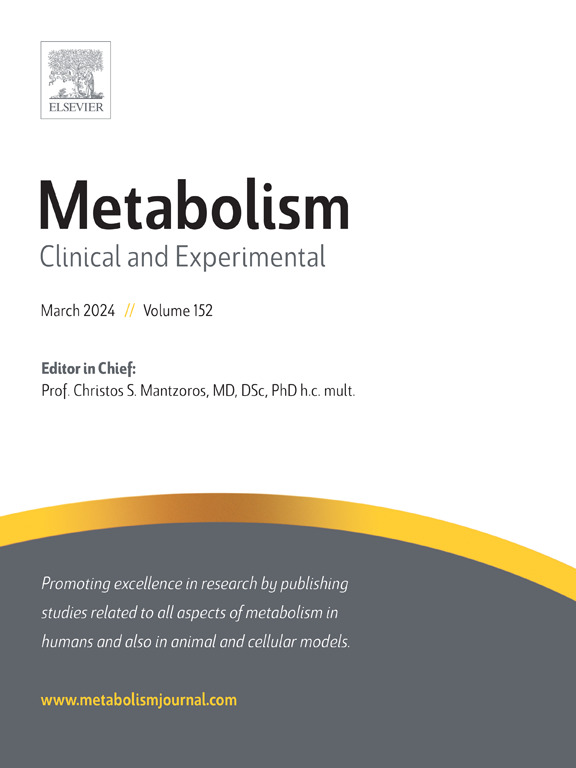Effects of coding variants in the glucokinase regulatory protein gene on hepatic glucose and triglyceride metabolism suggest a gene regulatory function of glucokinase
IF 10.8
1区 医学
Q1 ENDOCRINOLOGY & METABOLISM
引用次数: 0
Abstract
Background
Regulation of glucose metabolism after a meal is the major task of hepatic glucokinase (GCK). Inhibition and nuclear retention of glucokinase during fasting is achieved by glucokinase regulatory protein (GKRP). Compounds disrupting the GCK-GKRP interaction alter glucose but not triglyceride levels, whilst GKRP coding alleles lower glucose but elevate triglycerides. The aim of this study was to identify yet unknown functions of GKRP by examining human variants both rare (p.Q234P, p.H438Y) and common (p.P446L).
Methods
Fluorescently labelled human GKRP variant and GCK proteins were expressed in hepatoma cells or primary mouse hepatocytes to investigate the subcellular localization of both proteins, cellular glucose uptake, and triglyceride levels. Mutational effects on GKRP protein structure were analyzed with PyMOL. Nuclear-to-cytoplasmic distribution of the GCK-GKRP complex was modeled in MATLAB.
Results
Nuclear localization of the GKRP variants was decreased compared to wild-type. Only H438Y-GKRP still evoked WT-like GCK nuclear accumulation. Nuclear localization of Q234P-GKRP was most impaired and depended on the presence of GCK, which, supported by structural analyses, could stabilize its conformation. Nonetheless, inhibition of glucose uptake was least impaired with Q234P-GKRP. Triglyceride contents related to the glucose uptake of hepatoma cells were disproportionately high for cells expressing wild-type or H438Y-GKRP, the two variants that induced higher nuclear sequestration of GCK.
Conclusions
Our results, supported by a modeling approach, suggest that GKRP-mediated nuclear localization of GCK has a function in liver metabolism beyond GCK inhibition and sequestration. This needs further elucidation given that GKRP disruptors have been proposed for antihyperglycemic therapy.

求助全文
约1分钟内获得全文
求助全文
来源期刊

Metabolism: clinical and experimental
医学-内分泌学与代谢
CiteScore
18.90
自引率
3.10%
发文量
310
审稿时长
16 days
期刊介绍:
Metabolism upholds research excellence by disseminating high-quality original research, reviews, editorials, and commentaries covering all facets of human metabolism.
Consideration for publication in Metabolism extends to studies in humans, animal, and cellular models, with a particular emphasis on work demonstrating strong translational potential.
The journal addresses a range of topics, including:
- Energy Expenditure and Obesity
- Metabolic Syndrome, Prediabetes, and Diabetes
- Nutrition, Exercise, and the Environment
- Genetics and Genomics, Proteomics, and Metabolomics
- Carbohydrate, Lipid, and Protein Metabolism
- Endocrinology and Hypertension
- Mineral and Bone Metabolism
- Cardiovascular Diseases and Malignancies
- Inflammation in metabolism and immunometabolism
 求助内容:
求助内容: 应助结果提醒方式:
应助结果提醒方式:


